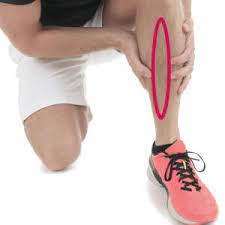Shin Splint Treatment

Often, people refer to shin splints when they feel any pain below the knee and in front of their lower leg. However, feeling pain in this area doesn’t necessarily mean you have shin splints Shin Splint Treatment.
Shin pain can be the result of several factors, and can vary in intensity. If you think you might have shin splints, it’s important to take a break from strenuous physical activity and contact a physiotherapist specializing in sports injuries so you can treat the pain and prevent future injury.
Below, we’ve answered some of the most common questions regarding shin splints:
What are shin splints?
Shin splints (medial tibial stress syndrome) are a repetitive strain injury affecting the muscles and fascia attaching to shin bone. When undergoing physical activity, such as running, the shin (tibia) bone bends. Shin splints result when the bone and surrounding tissue haven’t had time to heal before further physical strain. However, shin splints can also refer to injuries in the muscles and tissue surrounding the bone.
What causes shin splints?
Shin splints can happen as the result of ankle hypermobility (increased ankle range of motion) an abrupt change of workout routine, wearing improper shoes. Shin splints commonly happen as result of starting vigorous running or walking program by someone who is not typically active and has not prepared him or herself. If you have not been very active lately and would like to start a walking or running program, consult a physiotherapist to start a proper training program. Shin splints can also result from a change in the surface you workout on, such as rough terrain. Some other common causes of shin splints include improper or lack of stretching, over-striding while running, and ill-fitted or worn out shoes, all of which cause the shin to absorb more shock while you exercise.
Who is affected by shin splints?
Shin splints don’t necessarily affect a single group of people. Those who play sports such as soccer or basketball, in which excess stress in placed on the shin, can get shin splints. Shin splints also significantly affects runners, dancers and gymnasts, for example.
What are the symptoms of shin splints?
Shin splints are a generalized pain, unlike fractures, for example, which have a clearly localized area of pain. You might also notice your muscles are swollen, and exercises that use these muscles become painful. As well, placing pressure on this area will likely be painful.
Shin Splint Treatment
If you think you’re experiencing shin splints, contact a healthcare professional to receive a diagnosis. Treating a stress fracture is much different than treating a tight muscle, so understanding what is causing your shin pain is the first step. Most importantly, rest your body until you’ve healed.
How do you prevent shin splints?
Maintaining a regular exercise routine and using proper form when running or working out, for example, will help prevent shin splints, among other injuries. As well, strengthening exercises for your hips and calves will also help prevent shin splints.
Keeping the above information in mind will help you to make the best choice for your body, and prevent shin splints in the future so you can get back to doing what you love.